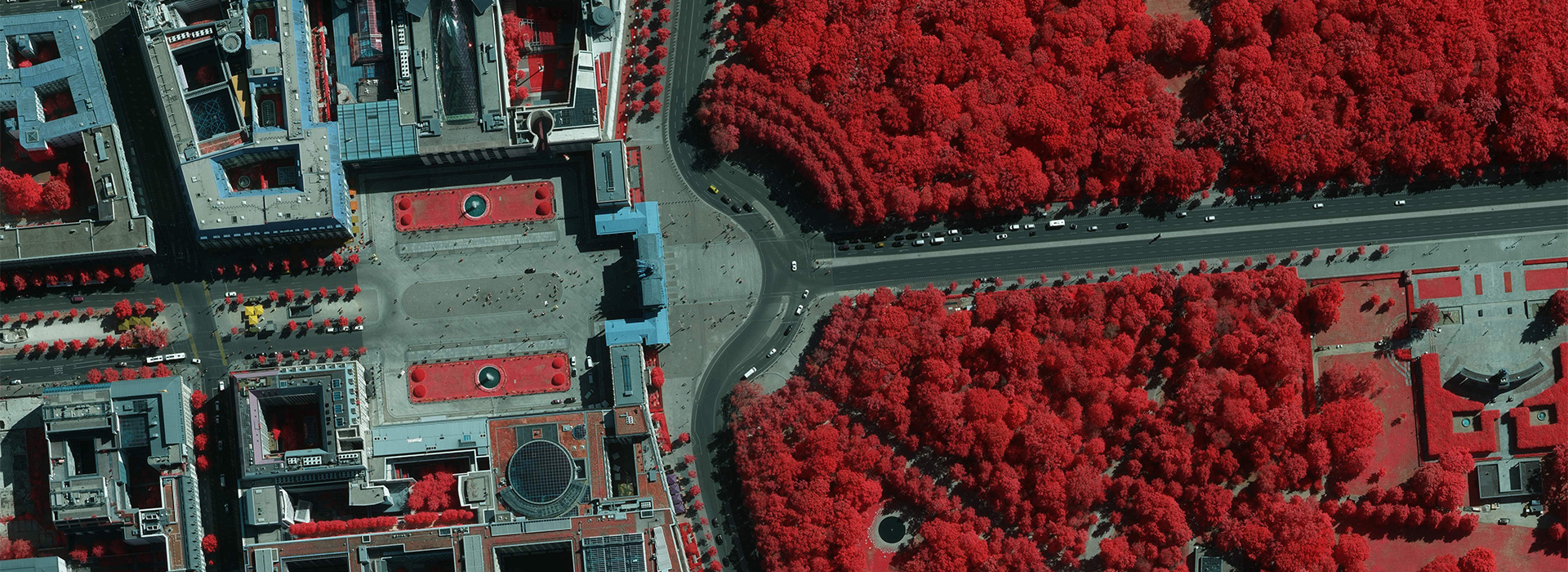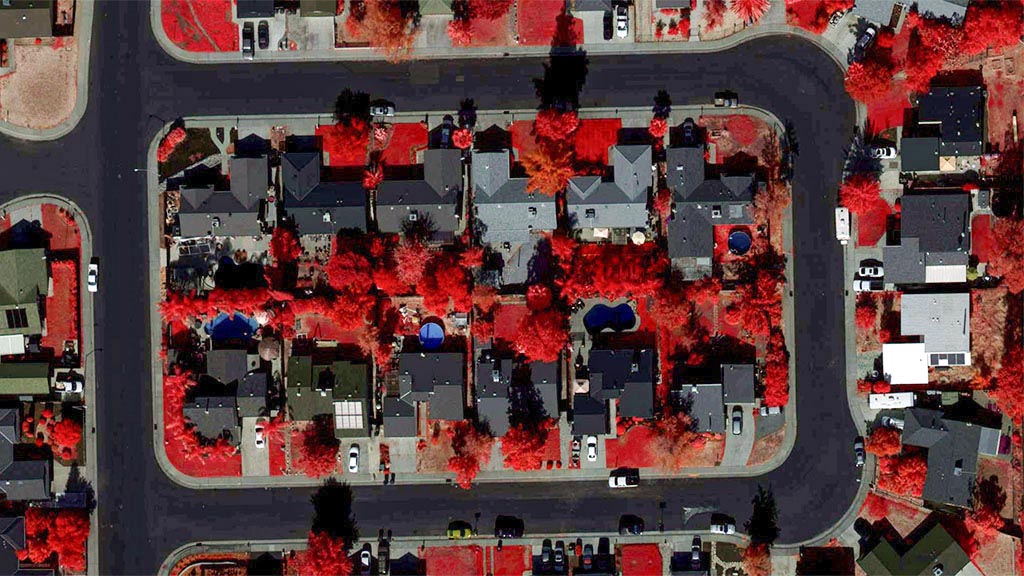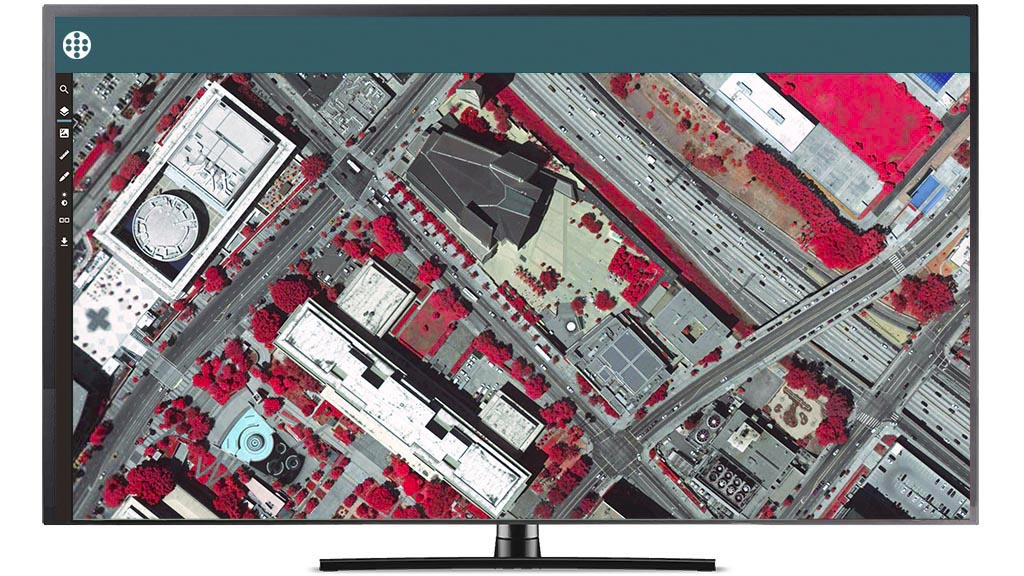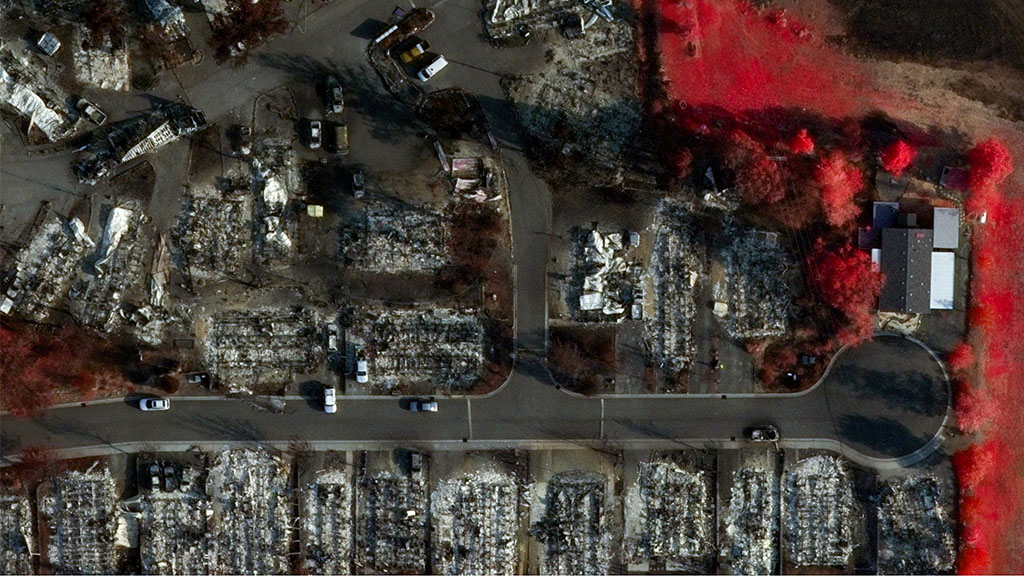Urban & Wide Area Collections
30+ Countries
7.5-20cm resolution
Did You Know?
What’s the difference between NIR (near-infrared) and CIR (colour-infrared) imagery? NIR is the undetectable-by-the-human-eye fourth band directly collected from our sensors and delivered as an on-premises product. CIR is the derivative of that collection, colourised to make vegetation, water surfaces, and other impervious surfaces easier to see.
Vegetation & Surface Classification
Near-infrared (NIR) is 4-band imagery, collected from several parts of the electromagnetic spectrum. With this type of data, users can extract information around a location’s vegetation and impervious surfaces. Identify plant health, soil moisture, water clarity, and wetland mapping. This data is extremely useful for monitoring environmental changes and can assist in land management and urban development.
Colour-Infrared (CIR)
View NIR imagery in Colour-Infrared (CIR) form inside of Viewer, Vexcel’s web-based application for accessing aerial content. The coloration of an image captured in near-infrared allows your eye to easily differentiate between ground surfaces in three layers and can detect vegetation, water bodies, roads and buildings.
Oregon Wildfires: A Quick Application
Wildfires are an annual threat across many areas of the U.S. As part of Vexcel’s disaster response program, imagery was collected over several of the impacted communities during one wildfire in Oregon. Using CIR imagery, emergency managers could easily gauge the level of destruction. Live trees and grass are colored red while dead, burned areas are black and gray tones. In just seconds, they could quickly see damaged areas and start plans for rebuilding the impacted community.








